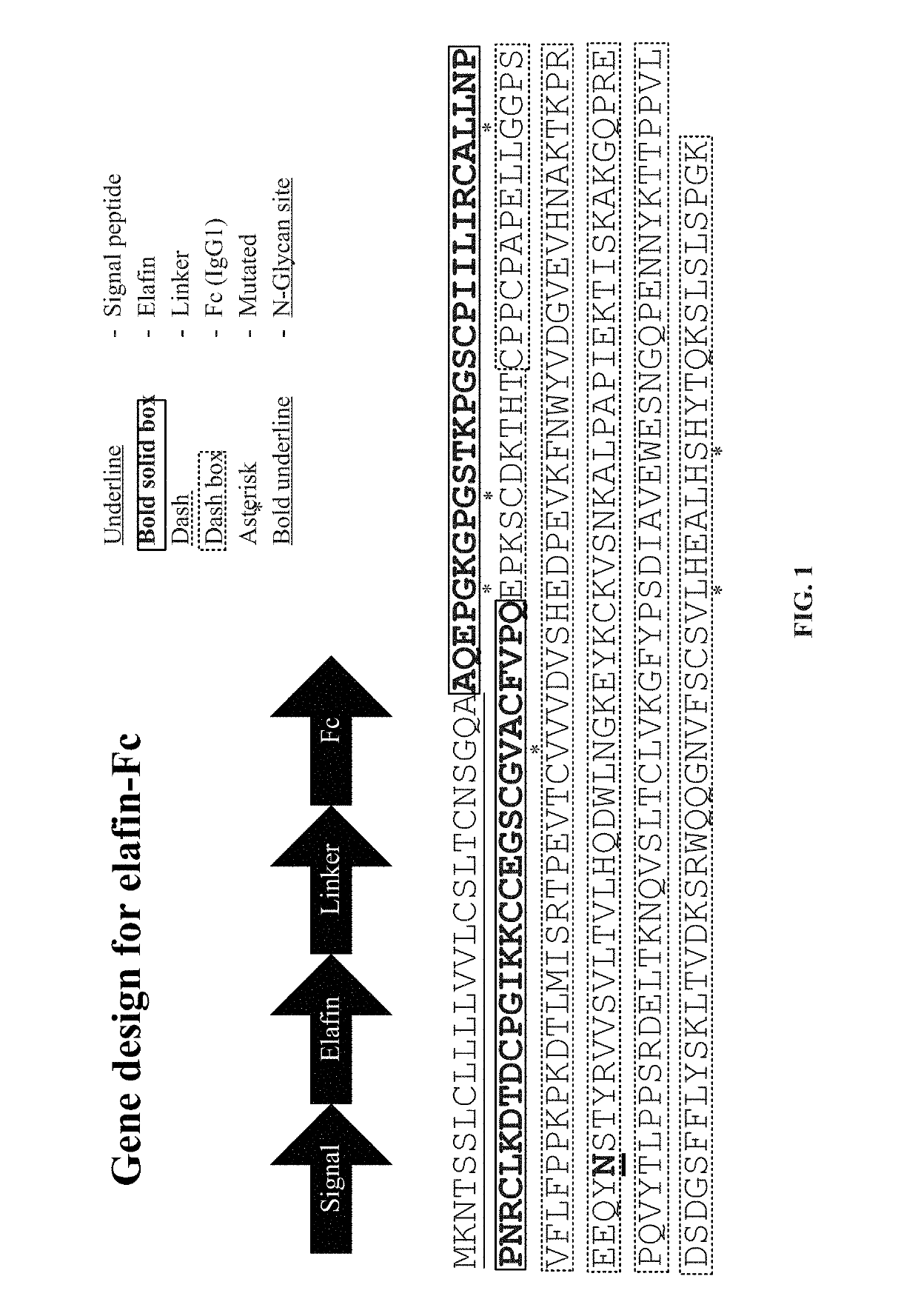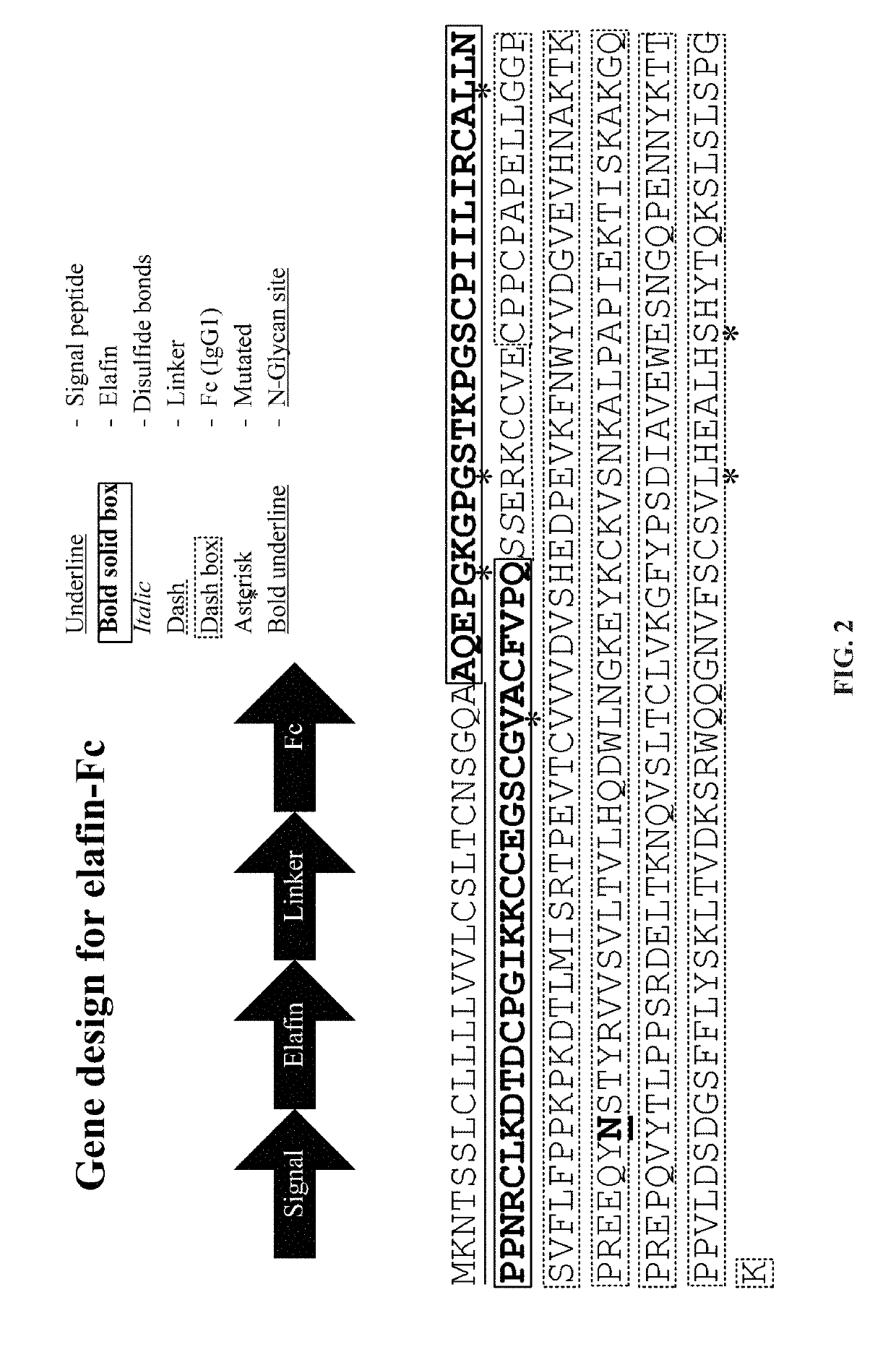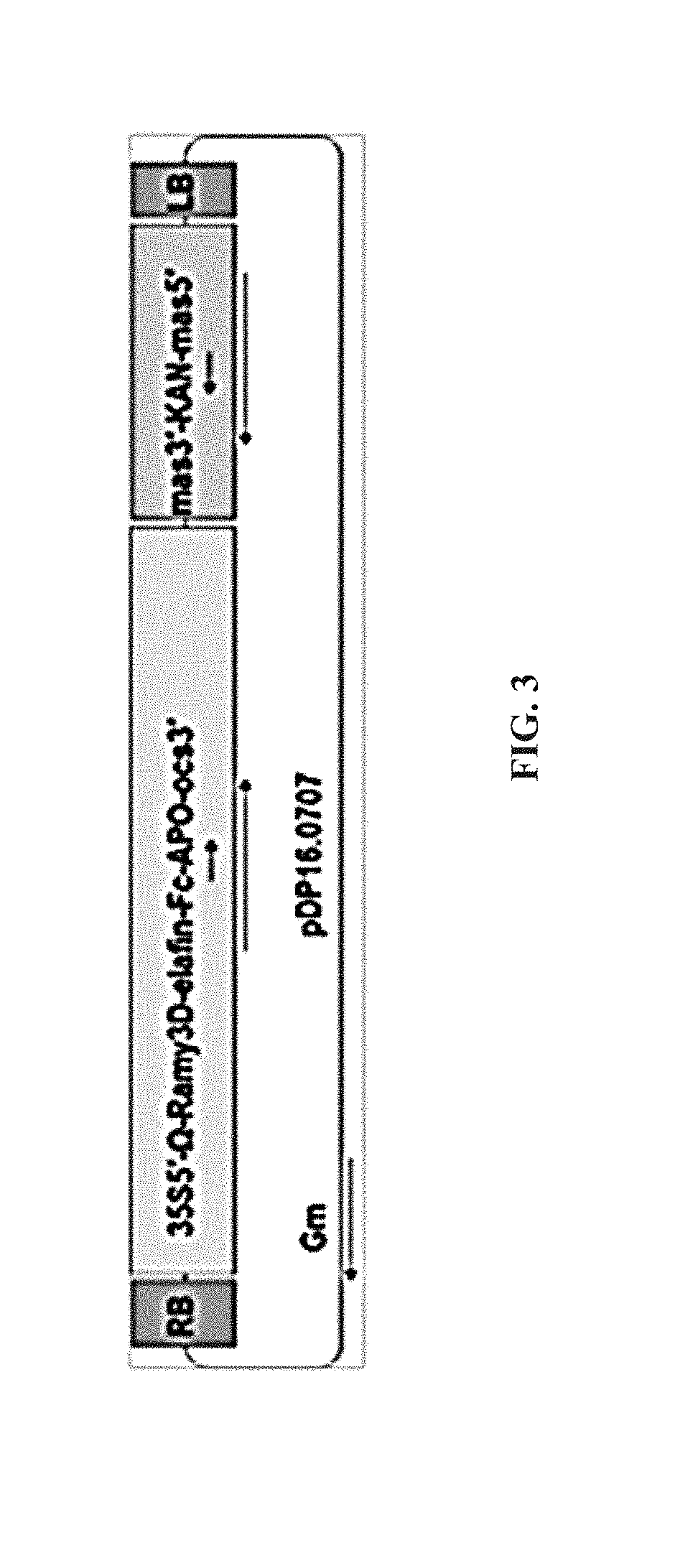Novel fusion proteins for treating inflammatory diseases
a technology of fusion proteins and inflammatory diseases, applied in the direction of peptide/protein ingredients, peptide sources, drug compositions, etc., can solve the problems of purity, molecular heterogeneity, and aatd usually develop shortness of breath, and achieve the effect of more resistant to proteolytic cleavage and resistance to oxidation
- Summary
- Abstract
- Description
- Claims
- Application Information
AI Technical Summary
Benefits of technology
Problems solved by technology
Method used
Image
Examples
example 1
[0113]1. Cloning
[0114]A gene coding for the human elafin followed by a hinge region (human IgG2) and two serines and then the coding sequence of the Fc domain from human IgG1 was codon-optimized for Nicotiana benthamiana expression. A nucleotide sequence encoding the Ramy3D signal peptide was fused to the N-terminal of the elafin coding region to enable secretion to the plant apoplast. Also, nucleotides encoding the omega leader sequence were included between the start of the coding region and the CaMV 35S promoter to improve elafin-Fc protein expression. The binary expression vector (pDP16.0707) that was created as a consequence was transformed into Agrobacterium tumefaciens EHA105 via electroporation. The expression vector encodes the elafin-Fc fusion protein corresponding to SEQ ID NO:13.
[0115]2. Preparation of Nicotiana benthamiana Plants
[0116]Wild-type Nicotiana benthamiana seedlings were grown from seed in soil-filled 4-inch pots in the greenhouse. Two weeks after germination,...
example 2
n, Purification, and Characterization of Recombinant Elafin-Fc Fusion Protein (Variant 5)
[0135]Nicotiana benthamiana plants were transformed with the expression vector encoding SEQ ID NO:13, as described in Example 1. The elafin-Fc fusion protein corresponding to SEQ ID NO:13 comprises a codon-optimized human elafin domain was fused to the Fc domain of human IgG1 using two serines and a hinge region as a fusion protein linker. To secrete the elafin-Fc fusion protein to the Nicotiana benthamiana apoplast, the rice α-amylase 3D gene signal peptide (Ramy3D) was included at the N-terminus of the elafin domain. Also, the S2 leader sequence, which is a modified version of the Ω leader sequence from tobacco mosaic virus and corresponds to SEQ ID NO:16, was included to enhance transient protein production. This protein was expressed under the control of Cauliflower mosaic virus (CaMV) 35S promoter. FIG. 7C shows the fusion protein expression from harvested leaf. The produced protein was the...
example 3
n, Purification, and Characterization of Recombinant Elafin-Fc Fusion Protein (Variant 4)
[0140]Protein engineering offers a solution for loss of stability and biological activity of therapeutic proteins. Using this approach, researchers were able to design target proteins that were resistant to oxidation and proteolytic cleavage [21,22]. Similarly, many biologically active proteins and peptides have a very short serum half-life due to fast liver and / or renal clearance, which limits their exposure in the target tissue and, consequently, their pharmacological effects. The Fc domain prolongs the serum half-life of Fc-fusion proteins due to pH-dependent binding to the neonatal Fc receptor (FcRn), which salvages the protein from being degraded in endosomes. In addition, from a processing viewpoint, the Fc region allows for an easy cost-effective purification by Protein-G / A affinity chromatography during manufacture [23,24]. However, the limitation of using this expression platform for gl...
PUM
| Property | Measurement | Unit |
|---|---|---|
| Fraction | aaaaa | aaaaa |
| Fraction | aaaaa | aaaaa |
| Fraction | aaaaa | aaaaa |
Abstract
Description
Claims
Application Information
 Login to View More
Login to View More - R&D
- Intellectual Property
- Life Sciences
- Materials
- Tech Scout
- Unparalleled Data Quality
- Higher Quality Content
- 60% Fewer Hallucinations
Browse by: Latest US Patents, China's latest patents, Technical Efficacy Thesaurus, Application Domain, Technology Topic, Popular Technical Reports.
© 2025 PatSnap. All rights reserved.Legal|Privacy policy|Modern Slavery Act Transparency Statement|Sitemap|About US| Contact US: help@patsnap.com



